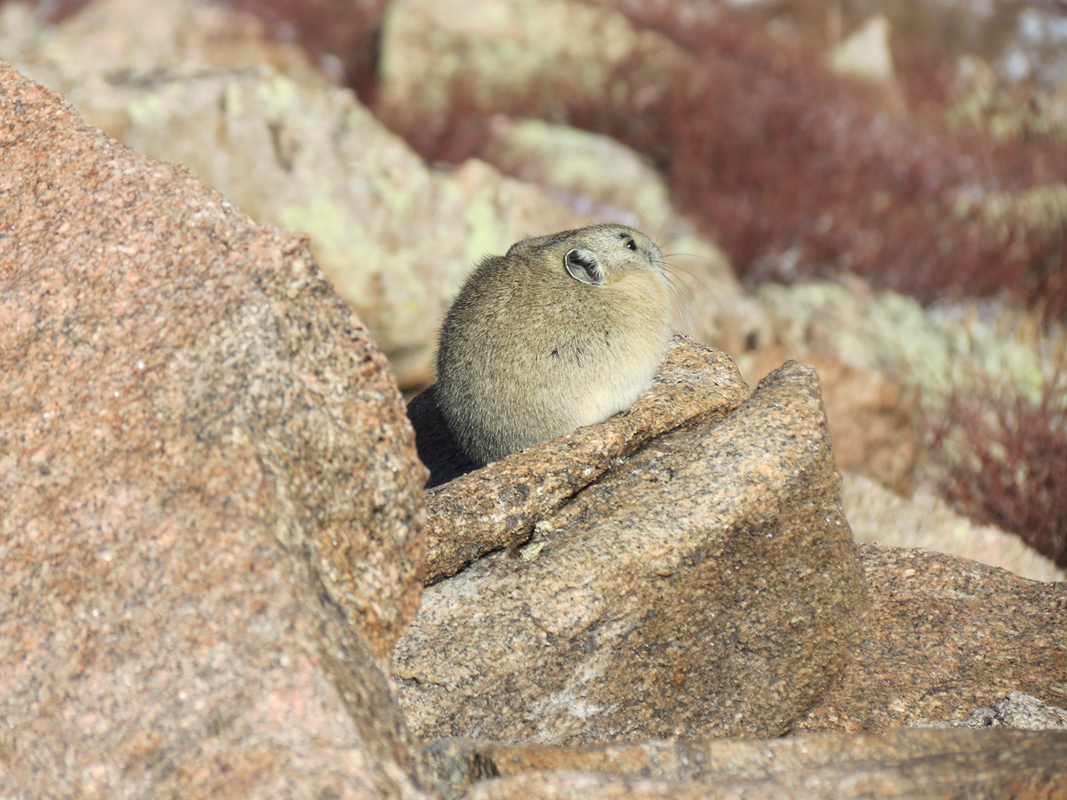|
Notes from the
Trail |
|
by Marlene Bornean (Editor's Note: This article compares winters from 2020 through 2023 with photos showing a variety of conditions and what you can encounter while hiking up to and summiting Flat Top Mountain in Rocky Mountain National Park. “Alpine Weather bounces between sunlight and storms, strong winds and balmy breezes, violent weather and surprising calm… resilient plants, insects, birds, and mammal, flourish in harmony with the land.” Joyce Gellhorn, Song of the Alpine Rocky Mountain National Park provides year round recreational opportunities. In winter months back-country skiing, snowshoeing, ice skating and trekking on spikes are popular activities. With increasing winter visitation in Rocky the trails are often packed down enough spikes are the only equipment needed on popular trails. I prefer to ski the trails when the snow conditions are prime. My husband, Walt, and I are out in all weather and all conditions since Rocky is our backyard. One must be equipped and prepared in any season but particularity in winter months. Being familiar with the Ten Essentials as well as packing layers is the key to having a safe and fun winter experience. Knowing when to turn back is a “must” skill. November 3, 2021 was very cold with extreme winds on the Flattop trail. We hiked above treeline but did not make the summit due to the harsh conditions. A frigid day with an unforeseen surprise, spotting a covey of white-tailed Ptarmigans on the snow covered tundra. I heard them before seeing them. Their clucking, soft hoots caused me to stop and search for tiny black eyes and bills in the pure white snow. I saw one, then two, then over a dozen in the deep snow. White-tail ptarmigans are the only birds to live on the alpine tundra year round with white plumage in winter and gray-brown in summer. Breeding males have a red eye comb. In winter months they use snow drifts for shelter and sustained themselves on willow buds. White-tailed ptarmigans have a thick layer of feathers on their legs, feet and toes not only adding warmth but acting like snowshoes. The day reminded me of a quote by John Muir, “…the blessings of one mountain day; whatever his fate, long life, short life, stormy or calm, his is rich forever.” This is me (Marlene) at the summit of Flat Top Mountain. What a contrast in weather conditions compared to one year earlier! This is a comparatively warm windless day on the summit. Nearly one year earlier, on the same mountain, we experienced significant cold and challenging wind (see the very top photo of this article). And isn't that why we keep coming back? Our mountain experiences, even on the same summit, are never the same but always wonderful. December 2023. Another very cold winter day on the Flattop Mountain trail. However, we did not have much wind until we reached treeline. No sightings of ptarmigans but their tracks where everywhere! December 21, 2023. This day did not reveal ptarmigans, but another creature known to the alpine tundra: the fascinating pika. Even though they belong to the rabbit family they appear more like a guinea pig! Pikas live in colonies on talus slopes making their homes among the rocks. They do not hibernate. They simply tolerate the harsh winters. In summer months you may see them harvesting their favorite food, alpine avens. Pikas store avens and other plants in “hay” piles deep in their rocky homes. They feed on these “hay” piles all winter. Sharp squeaks are their way of communicating to other pikas and alerting to danger. On this day we observed a pika quietly sheltering against a large boulder from the fierce strong winds. Dusty grouse are often seen in the subalpine forest on the Flattop Mountain Trail. Grouse are rather large birds weighing up to three pounds. They have a pale gray band on a rounded tail. Dusky grouse enjoy the high country in winter and in spring move down slightly to lower meadows for nesting. December 2023. Marlene near a very cold Flat Top Mountain summit. Every winter season is different as is every day is in the high country of RMNP. So far, this 2023/2024 winter season has been lacking snow. Here the trail has a thin covering of packed snow. No need for snowshoes just spikes for traction. These two photos show arctic conditions and strong gale force winds sculpturing snow into fine art during the winters of 2021 and 2023.. This overlook makes for a great second breakfast or snack stop. It provides shelter before reaching treeline with a stunning view of Emerald Lake below, Mills Lake in the distance and the striking Longs Peak massif. During the winter of 2020, as soon as I stopped at Emerald Lake Overlook, a curious and rather bold pika came right up to my boot! Flat Top Mountain and Flat Top Mountain Trail Flattop elevation: 12,324 Round Trip from Bear Lake: 8.8 miles Elevation gain: 2,874
0 Comments
Leave a Reply. |
"The wild requires that we learn the terrain, nod to all the plants and animals and birds, ford the streams and cross the ridges, and tell a good story when we get back home." ~ Gary Snyder
Categories
All
“Hiking -I don’t like either the word or the thing. People ought to saunter in the mountains - not hike! Do you know the origin of the word ‘saunter?’ It’s a beautiful word. Away back in the Middle Ages people used to go on pilgrimages to the Holy Land, and when people in the villages through which they passed asked where they were going, they would reply, A la sainte terre,’ ‘To the Holy Land.’ And so they became known as sainte-terre-ers or saunterers. Now these mountains are our Holy Land, and we ought to saunter through them reverently, not ‘hike’ through them.” ~ John Muir |
© Copyright 2025 Barefoot Publications, All Rights Reserved















